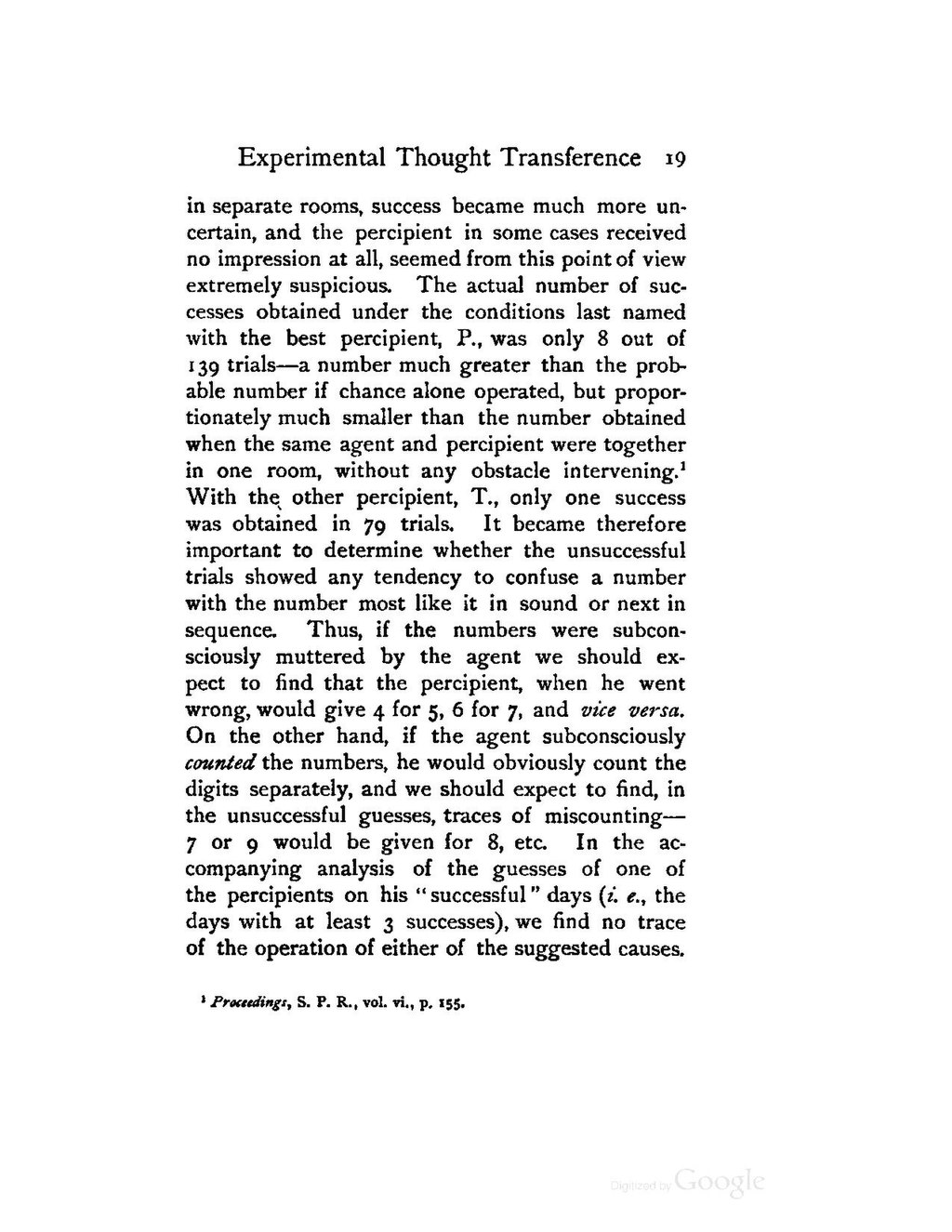in separate rooms, success became much more uncertain, and the percipient in some cases received no impression at all, seemed from this point of view extremely suspicious. The actual number of successes obtained under the conditions last named with the best percipient, P., was only 8 out of 139 trials—a number much greater than the probable number if chance alone operated, but proportionately much smaller than the number obtained when the same agent and percipient were together in one room, without any obstacle intervening.[1] With the other percipient, T., only one success was obtained in 79 trials. It became therefore important to determine whether the unsuccessful trials showed any tendency to confuse a number with the number most like it in sound or next in sequence. Thus, if the numbers were subconsciously muttered by the agent we should expect to find that the percipient, when he went wrong, would give 4 for 5, 6 for 7, and vice versa. On the other hand, if the agent, subconsciously counted the numbers, he would obviously count the digits separately, and we should expect to find, in the unsuccessful guesses, traces of miscounting—7 or 9 would be given for 8, etc. In the accompanying analysis of the guesses of one of the percipients on his "successful" days (i.e., the days with at least 3 successes), we find no trace of the operation of either of the suggested causes.
- ↑ Proceedings, S.P.R., vol. vi., p. 155.
